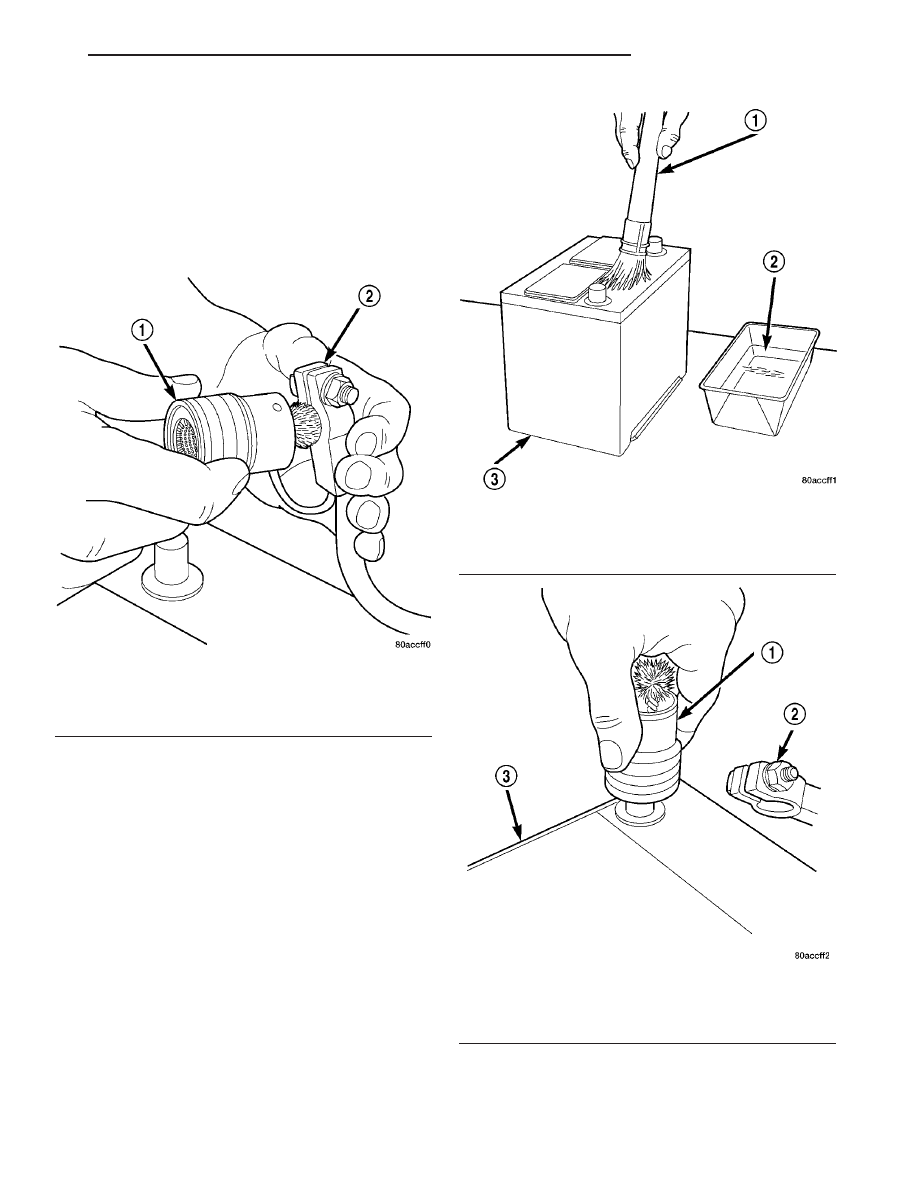Chrysler Pacifica. Manual - part 484

found in this service manual and the owner’s man-
ual, it is recommended that these procedures be per-
formed any time the battery or related components
must be removed for vehicle service.
(1) Clean the battery cable terminal clamps of all
corrosion. Remove any corrosion using a wire brush
or a post and terminal cleaning tool, and a sodium
bicarbonate (baking soda) and warm water cleaning
solution (Fig. 1).
(2) Clean the battery tray and battery holddown
hardware of all corrosion. Remove any corrosion
using a wire brush and a sodium bicarbonate (baking
soda) and warm water cleaning solution. Paint any
exposed bare metal.
(3) If the removed battery is to be reinstalled,
clean the outside of the battery case and the top
cover with a sodium bicarbonate (baking soda) and
warm water cleaning solution using a stiff bristle
parts cleaning brush to remove any acid film (Fig. 2).
Rinse the battery with clean water. Ensure that the
cleaning solution does not enter the battery cells
through the vent holes.
(4) Clean the battery thermowrap with a sodium
bicarbonate (baking soda) and warm water cleaning
solution using a soft bristle parts cleaning brush to
remove any acid film.
(5) Clean any corrosion from the battery terminal
posts with a wire brush or a post and terminal
cleaner, and a sodium bicarbonate (baking soda) and
warm water cleaning solution (Fig. 3).
INSPECTION
The following information details the recommended
inspection procedures for the battery and related
Fig. 1 Cleaning Battery Cable Terminal Clamp -
Typical
1 - Terminal Brush
2 - Battery Cable
Fig. 2 Cleaning Battery - Typical
1 - Cleaning Brush
2 - Warm Water and Baking Soda Solution
3 - Battery
Fig. 3 Cleaning Battery Terminal Post - Typical
1 - Terminal Brush
2 - Battery Cable
3 - Battery
CS
BATTERY SYSTEM
8F - 5
BATTERY SYSTEM (Continued)